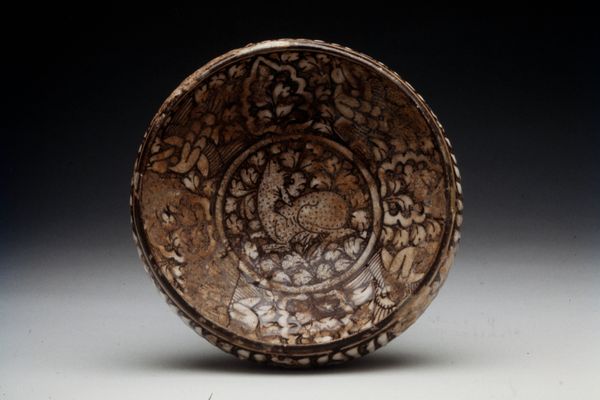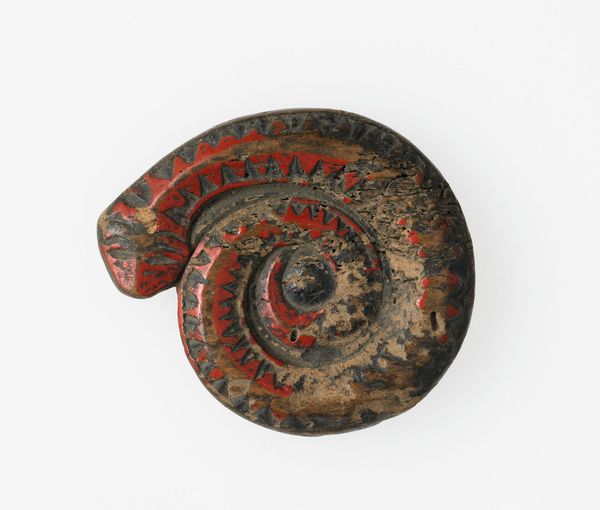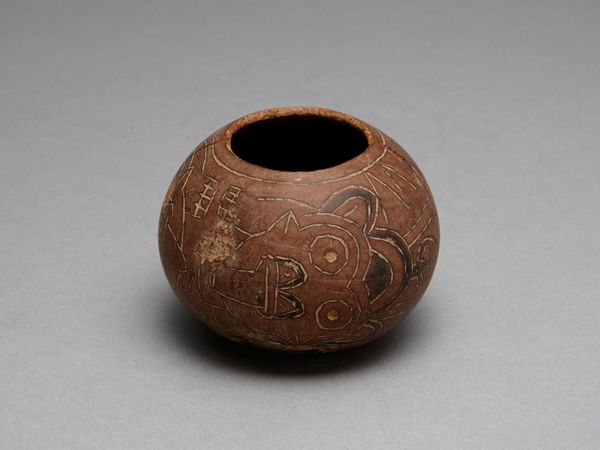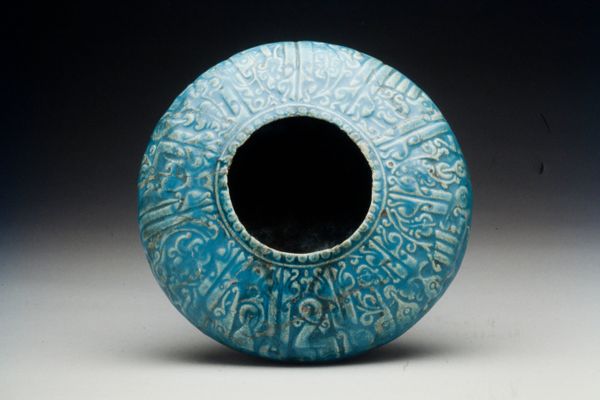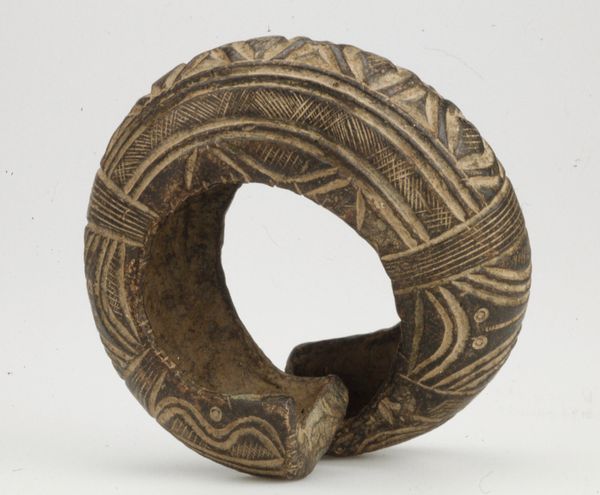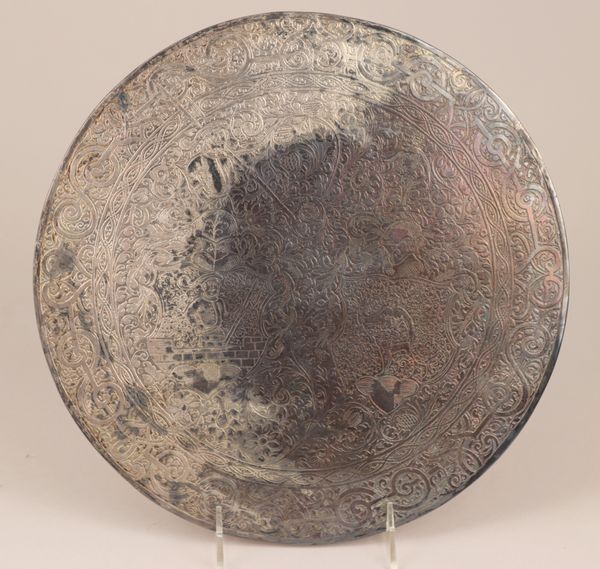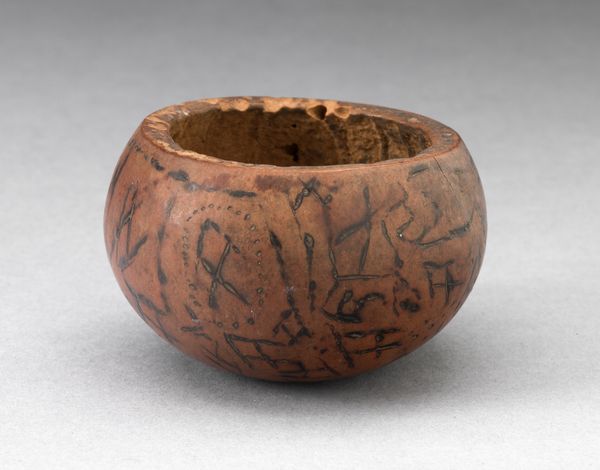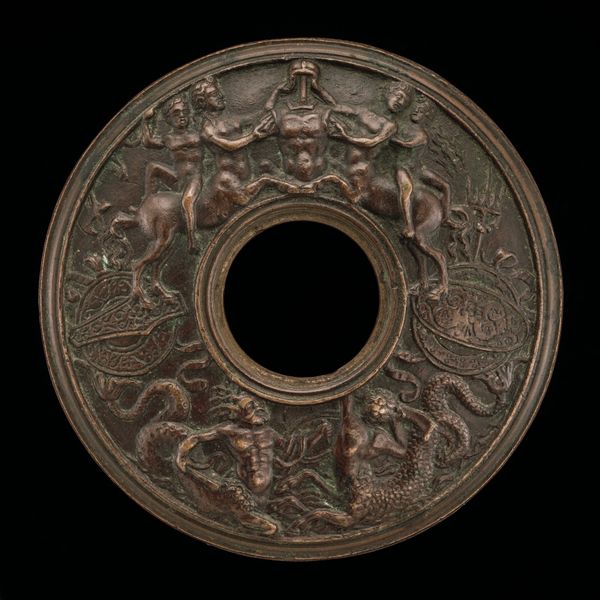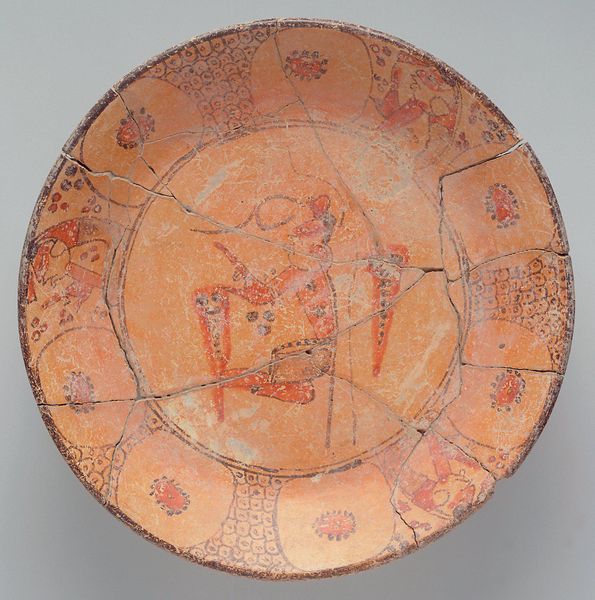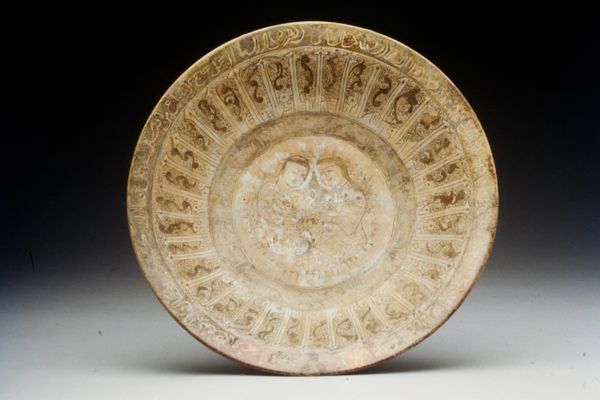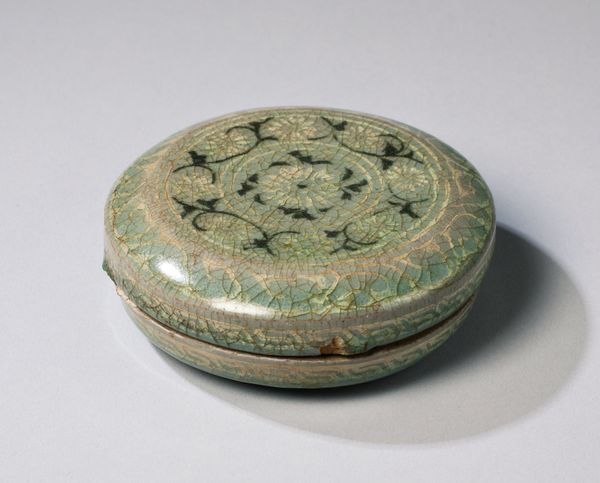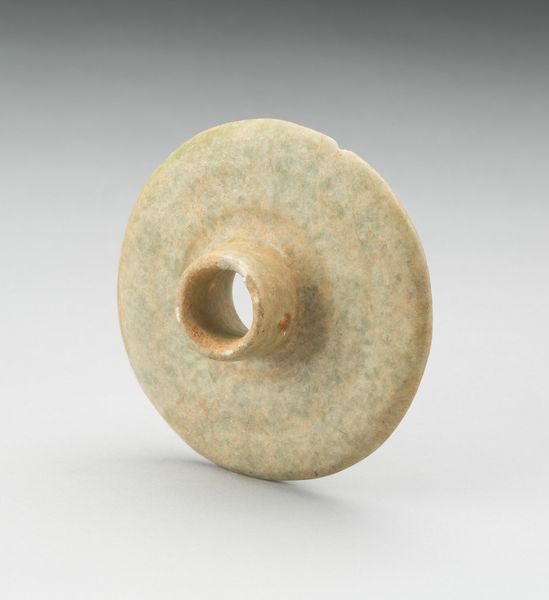
Vamplate Belonging to an Armor for Field and Tournament Made for Duke Nikolaus "The Black" Radziwill (1515–1565), Duke of Nesvizh and Olyka, Prince of the Empire, Grand Chancellor and Marshal of Lithuania 1530 - 1900
0:00
0:00
metal, sculpture
#
weapon
#
metal
#
sculpture
#
11_renaissance
#
sculpture
#
armor
Dimensions: D. 8 1/2 in. (33.3 cm); H. 4 7/8 in. (12.4 cm); Diam. 13 1/8 in. (33.3 cm); Wt. 3 lb. 3 oz. (1454 g)
Copyright: Public Domain
Editor: Here we have the vamplate, part of a suit of armor made sometime between 1530 and 1900 for Duke Nikolaus "The Black" Radziwill. It's crafted from metal, a surprisingly delicate-looking metal, all things considered. What's striking to me is how the circular form, even though battle-worn, feels ornamental. What do you see in this piece? Curator: The vamplate is compelling in its surface articulation. Observe the radial symmetry, echoed by the rivet placement and the concentric rings of ornamentation. The artist, Kunz Lochner, seems interested in the play between functional design and surface decoration. Editor: I see the radial symmetry you’re describing. But the surface decorations also feel haphazard, as though some of it's faded. Curator: Consider the purpose, which speaks to formalist tension: protection through armor and display of wealth or prestige via embellishment. Wear may actually enrich the textural element. What signs or systems seem apparent to you within the design? Editor: There's an interesting visual balance created by what I see as the geometric shapes, but there's this tension of the metal showing distress on its surface that complicates its look. I'm not sure what kind of language, so to speak, is at play with these shapes. Curator: Indeed. Semiotically, one could argue the distressed metal stands in direct conflict with a material object representing status. Perhaps it serves to humanize an object intended to signal power. Editor: That's a great way to consider this vamplate. Thanks! Curator: A pleasure. Reflecting on the artwork with you enables us to interpret form in new, rewarding ways.
Comments
No comments
Be the first to comment and join the conversation on the ultimate creative platform.
